The Morris-Jumel Mansion
This Harlem Heights mansion is the oldest house in Manhattan.
I was watching the play Hamilton a couple of weeks ago and it brought back memories of my visit to the Morris-Jumel Mansion during a trip to New York City in 2015. The mansion, the oldest in Manhattan, turns 260 this year.
Aaron Burr had lived at the mansion and playwright Lin-Manuel Miranda had spent time there while working on Hamilton, using the location as a source of inspiration.
I’m providing a very brief summary of the history of the mansion below and recommend visiting the Morris-Jumel Mansion website for more detailed information.
The Morris-Jumel Mansion was built for Colonel Roger Morris and his wife as a summer home. Enslaved laborers were possibly used along with other workers to build the home. Mary Philipse Morris, Colonel Roger’s wife, was a descendent of the Philispses; a family whose wealth had come from the slave trade.
Colonel Morris had fought alongside George Washington in the French and Indian War. But he was a Loyalist and during the early stirrings of the American Revolutionary War, he returned to London to avoid bringing attention to his family.
The abandoned mansion was then occupied for five weeks by George Washington and used as the military headquarters for the war in 1776. At times the mansion was also used by the British. Years later, in 1790, George Washington held a dinner at the mansion. Alexander Hamilton and Eliza Schuyler Hamilton were amongst the guests.
On the day of my visit, I exited the subway station and encountered the typical New York City street with all the noise, cars, and people. The moment I walked past the supermarket (I checked Google and the supermarket is still there) and turned down onto Sylvan Terrace it was like stepping back in time. I hadn’t known about the existence of these wooden row houses built between 1882 and 1883 until I’d encountered them during the visit. I found a few websites that covered the history of Sylvan Terrace, one of which is Untapped Cities.
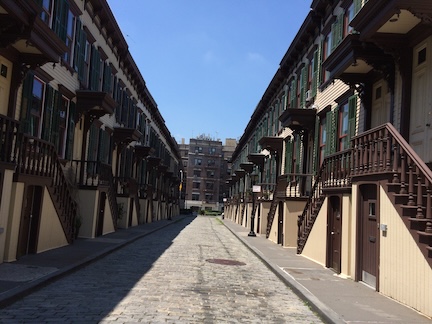
The traffic noise became muted and replaced by the sound of wind filtering through trees. Upon entering the grounds, I got my first view of the mansion from the side. A sign directed me around the structure to the main entrance built in the American Palladian style.
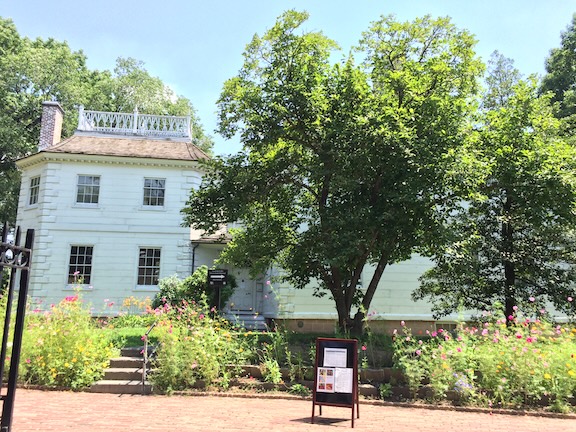
The main entrance features the columns with a pediment above typical of Palladian architecture.
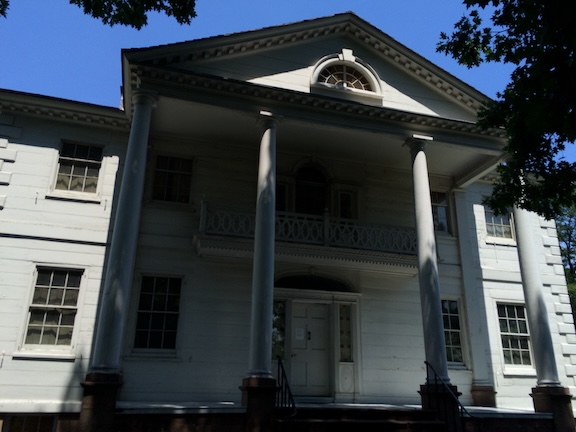
Tours of the interior are self-guided. It was fascinating to see the various rooms decorated with furniture and other items dating back to the late 1700’s.
One room of note was the octagonal room which served as the drawing room. Used for social gatherings, it is believed to be the first one built in the colonies.
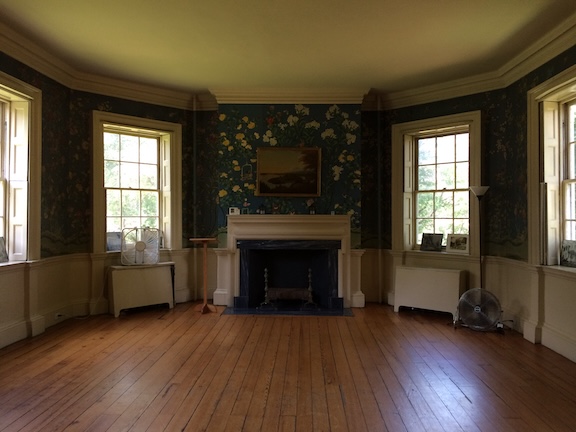
The room has been renovated since my visit. The virtual tour on the website shows that the dark flowered wallpaper has been replaced with a light blue one featuring clouds while the hardwood floor has been completely covered by wall to wall carpet in red. The room looks more polished now when compared to my photo.
The upstairs contains the bedrooms and while I took photos of them, the rooms weren’t well lit and my resulting photos make the details of the rooms hard to see so I decided not to share them here.
A trip down a set of old wooden stairs that appear to be original led to the kitchen. The fireplace contained a pot crane which would have been used during the time period to control cooking temperatures.
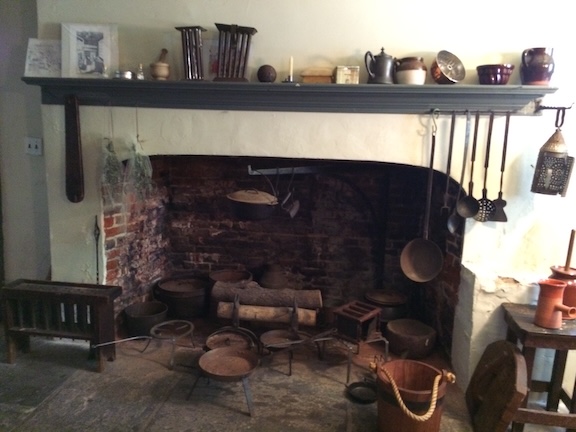
One unusual item found in the kitchen on top of the fireplace mantel was a cannonball. I was told by the employee there at the time that it was from the Revolutionary War and had been found on the grounds of the mansion along with several others.
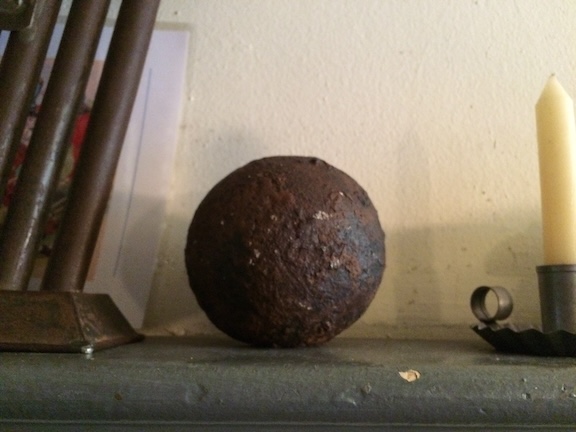
If you’re ever in New York City, I recommend a visit to the Morris-Jumel Mansion if you’re interested in Revolutionary War history.
As a Regency and Victorian romance writer, I find inspiration visiting homes built during those time periods. Is there a place that you’ve visited that has inspired you? Please share. I’d love to hear from you.
